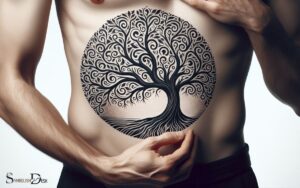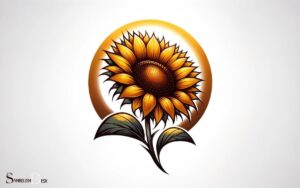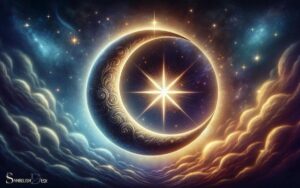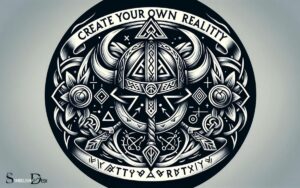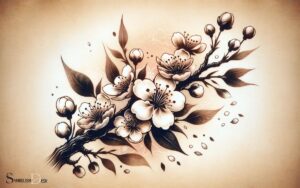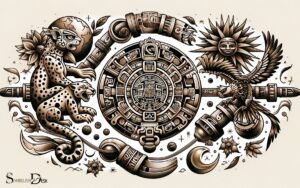Tattoo Symbols That Mean Strength: Strength!
Tattoo symbols that represent strength are varied and come from numerous traditions and cultures, including animals like the lion and eagle, mythological creatures such as dragons and phoenixes.
Each symbol has its own history and significance, making them powerful choices for those looking to embody the concept of strength in their body art.
Tattoo symbols that mean strength include:
- Animals: Lions, bears, and eagles are commonly associated with power and courage.
- Mythological Creatures: Dragons, phoenixes, and griffins symbolize supernatural strength and resilience.
- Cultural Icons: Celtic knots represent eternal strength, while the Hamsa is a symbol of protection and strength in Middle Eastern cultures.
- Natural Elements: Oak trees signify solid and enduring strength, while mountains reflect steadfastness and permanence.
Choosing a symbol for a strength tattoo often involves personal reflection on what aspect of strength is most significant to the individual.
Selecting a tattoo symbol for strength offers a personal reminder of resilience and power, tailored to one’s unique journey and values.
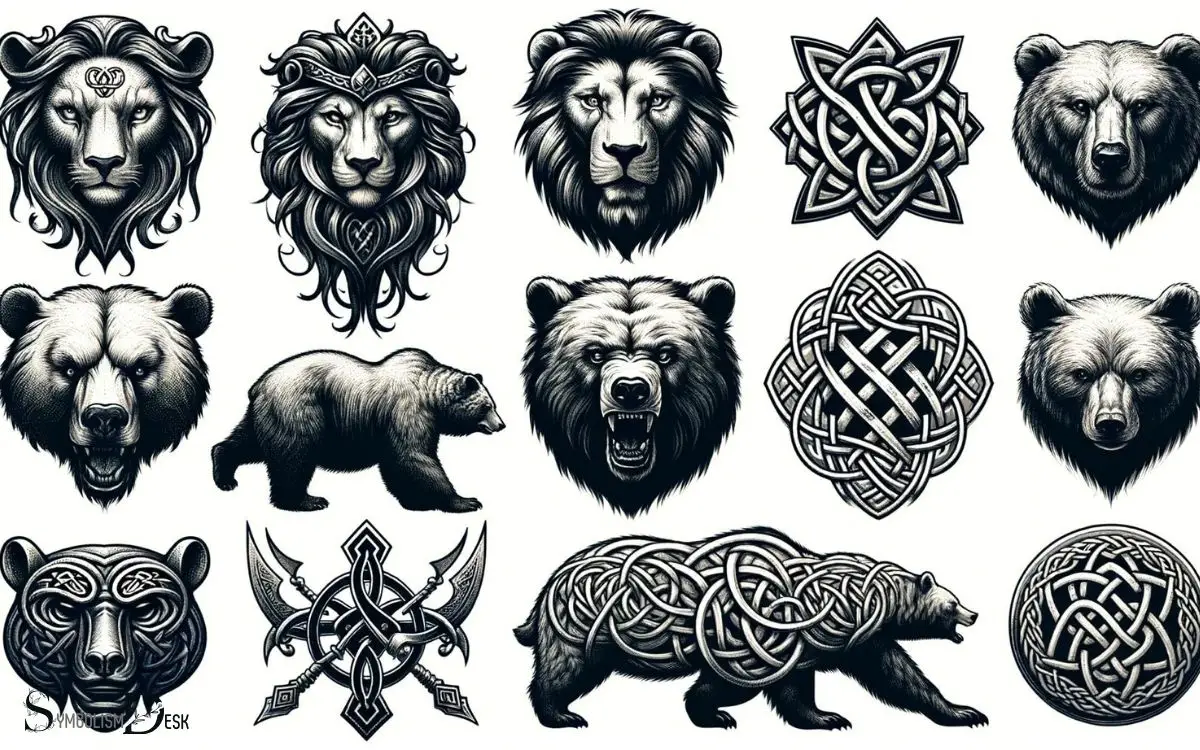
Key Takeaway
Traditional Symbols of Strength
Traditional symbols of strength are often rooted in ancient cultures and hold significant meaning for those seeking to convey power and resilience through their tattoos.
One such symbol is the Celtic knot, representing the interconnectedness of all things and the endurance of the human spirit.
The Maori Koru, with its spiral shape, signifies new life, growth, and strength. The Viking runic symbol, known as Aegishjalmur or the Helm of Awe, is believed to possess protective qualities and instill fearlessness in the wearer.
These symbols serve as a timeless reminder of inner fortitude and the ability to overcome adversity. They’re a timeless way to honor the strength within oneself and to inspire others to do the same.
When it comes to tattoos, animals representing strength have also been significant throughout history.
Animals Representing Strength
Animals representing strength have long been valued as tattoo symbols, embodying qualities of power, resilience, and determination.
The lion is a classic representation of strength, often symbolizing courage and leadership due to its position as the ‘king of the jungle.’
Similarly, the bear is revered for its physical power and protective nature, making it a popular choice for those seeking a symbol of inner strength.
The wolf is also frequently chosen for its association with loyalty, perseverance, and a strong sense of community within a pack.
Additionally, the elephant is a symbol of strength in many cultures, representing not only physical power but also wisdom and longevity.
These animals, through their characteristics and behaviors, offer individuals a way to express their own resilience and fortitude through body art.
Mythological Symbols of Power
Mythological symbols of power are deeply ingrained in various cultures and have served as sources of inspiration for countless individuals.
In this section, the Norse Hammer Symbol and the Greek Lion Emblem will be explored for their representations of strength and resilience.
These mythological symbols continue to captivate and inspire those seeking to convey unwavering power through their tattoos.
Norse Hammer Symbol
Frequently, people choose to ink themselves with the Norse hammer symbol to represent strength and power in their tattoos.
The Norse hammer, known as Mjölnir, is a prominent symbol in Norse mythology and is closely associated with the god Thor.
Here are three reasons why the Norse hammer symbol is a popular choice for representing strength in tattoos:
- Mythological significance: The Norse hammer symbolizes the power of Thor, the god of thunder, lightning, and storms in Norse mythology.
- Protection: In Norse mythology, Mjölnir is also seen as a protective symbol, warding off malevolent forces and bringing blessings of strength and courage to the wearer.
- Resilience: The Norse hammer represents resilience and the ability to overcome obstacles, making it a fitting symbol for inner strength and determination.
Greek Lion Emblem
The Norse hammer symbolizes strength and resilience, and similarly, the Greek lion emblem embodies power and courage in mythological symbolism.
In ancient Greece, the lion was associated with the goddess Hera, representing regality, authority, and dominion.
The Nemean lion, a creature in Greek mythology, was invulnerable to weapons and thus became a symbol of unstoppable power.
This emblem often adorned the shields and armors of ancient Greek warriors, signifying their bravery and valor in battle. The lion also represented protection and was believed to ward off evil spirits.
Below is a table depicting the symbolic meanings of the Greek lion emblem:
| Symbolic Meaning | Description |
|---|---|
| Power | Represents strength and authority |
| Courage | Signifies bravery and valor |
| Protection | Symbol of defense and guardianship |
The Greek lion emblem is a potent representation of strength, courage, and protection in ancient mythology.
Objects and Elements Symbolizing Strength
Objects and elements often symbolize strength in various cultures and belief systems. For example, the oak tree is a well-known symbol of strength due to its durability and deep roots.
Similarly, the lion is widely recognized as a symbol of strength and courage. The anchor represents stability and resilience in the face of adversity.
Oak Tree Symbolism
An oak tree symbolizes strength and endurance in many cultures around the world.
- The oak tree is often seen as a symbol of resilience and power due to its ability to withstand harsh conditions and weather storms.
- In Celtic traditions, the oak tree is associated with the powerful god of thunder, symbolizing strength and protection.
- The deep roots of the oak tree signify stability and a strong foundation, representing the enduring strength that comes from being deeply rooted in one’s beliefs and values.
The oak tree’s symbolism of strength is reflected in various art forms, literature, and even as a popular choice for tattoos, where it serves as a reminder of inner fortitude and unwavering resilience.
Lion as Strength
Symbolizing strength, the lion has been a prominent choice for tattoos due to its depiction as a powerful and majestic creature. The lion’s association with courage, leadership, and resilience makes it a popular symbol of strength.
In many cultures, the lion is revered as the king of the animal kingdom, embodying bravery and fortitude. The lion’s mane, in particular, is often seen as a symbol of power and dominance.
The image of a lion in a tattoo can serve as a reminder of one’s inner strength and ability to overcome challenges. The lion’s ferocity and fearlessness further solidify its representation of strength.
Anchor Representation Strength
The anchor symbolizes strength in various tattoo designs, representing stability and resilience amidst life’s challenges.
- Stability: The anchor, as a heavy object that keeps a ship in place, symbolizes stability in turbulent waters, serving as a reminder of the strength needed to endure difficult times.
- Resilience: Anchors are designed to endure constant pressure and harsh conditions, making them a powerful symbol of resilience in the face of adversity.
- Hope: In addition to strength and stability, anchors also represent hope, as they provide a sense of security and the promise of a safe harbor after enduring storms.
Transitioning into the subsequent section about ‘cultural and historical strength symbols’, the anchor’s significance in maritime history and its portrayal as a symbol of strength have made it a popular choice for those seeking to convey resilience and stability through body art.
Cultural and Historical Strength Symbols
Throughout history, various cultures have celebrated and revered strength through the use of powerful symbols. These symbols often reflect the values and beliefs of the culture they originate from.
Here are some cultural and historical symbols of strength:
| Culture | Symbol |
|---|---|
| Norse | Thor’s Hammer (Mjolnir) |
| Chinese | Dragon |
| Celtic | Triskelion |
The Norse symbol of Thor’s Hammer, Mjolnir, represents the strength of the god Thor and was worn as a protective amulet. In Chinese culture, the dragon is a symbol of power, strength, and good luck.
The Celtic triskelion, with its three interconnected spirals, is believed to represent progress, growth, and strength.
These symbols continue to inspire and empower individuals today, transcending time and cultural boundaries.
Modern and Contemporary Strength Symbols
Continuing the exploration of strength symbols, modern and contemporary cultures also embrace powerful representations through tattoo art. In today’s society, individuals often choose tattoo symbols that convey strength and resilience. For example, many people are drawn to the white tiger symbolism, which represents strength, courage, and fearlessness. This majestic creature is often depicted in tattoos as a symbol of overcoming adversity and thriving in the face of challenges. The white tiger is a powerful representation of resilience and determination, making it a popular choice for those seeking to express their inner strength through body art.
Some of the modern and contemporary strength symbols commonly seen in tattoos include:
- The Phoenix: Represents rebirth, renewal, and the ability to rise from challenges.
- The Lion: Symbolizes courage, bravery, and leadership.
- The Anchor: Signifies stability, hope, and the ability to stay grounded in the face of adversity.
These symbols hold deep meaning for many people and are often chosen to represent personal experiences of overcoming hardships and embodying inner strength.
As the tattoo art continues to evolve, these contemporary strength symbols remain timeless in their representation of resilience and fortitude.
Conclusion
The world of tattoo symbols offers a myriad of options for representing strength. From traditional symbols to modern interpretations, there are countless ways to convey the concept of strength through body art.
Like a tapestry woven with threads of resilience and fortitude, these symbols serve as visual reminders of the inner power and determination that resides within each individual.

